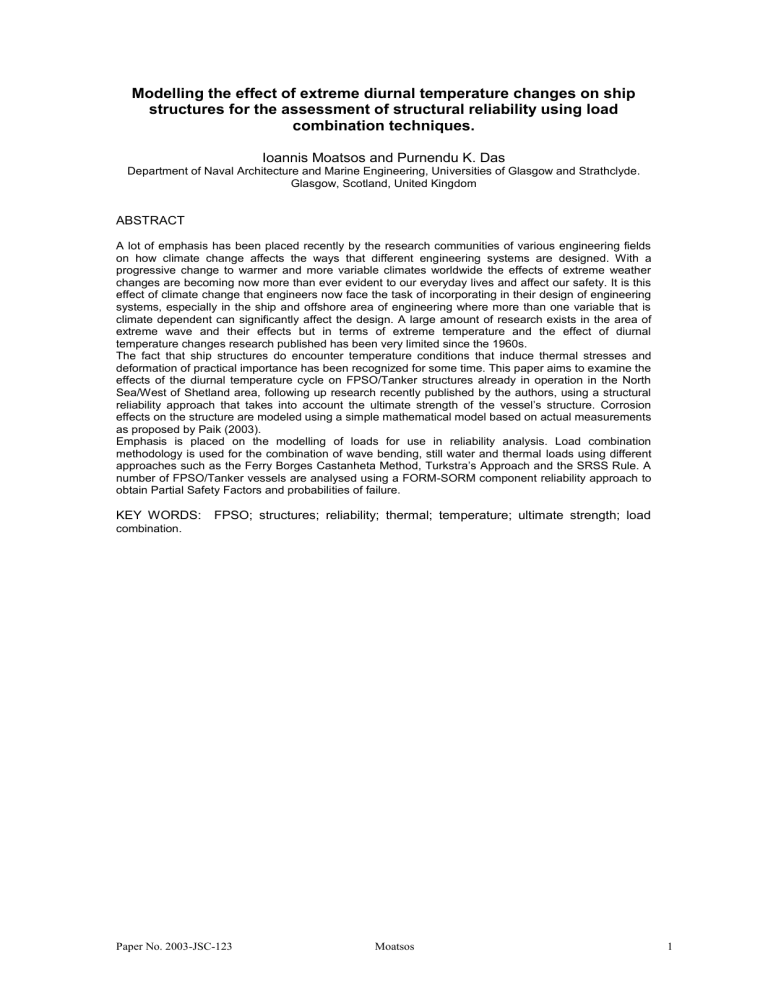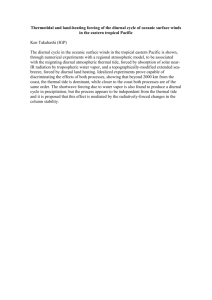Modelling the effect of extreme diurnal temperature changes on ship

Modelling the effect of extreme diurnal temperature changes on ship structures for the assessment of structural reliability using load combination techniques.
Ioannis Moatsos and Purnendu K. Das
Department of Naval Architecture and Marine Engineering, Universities of Glasgow and Strathclyde.
Glasgow, Scotland, United Kingdom
ABSTRACT
A lot of emphasis has been placed recently by the research communities of various engineering fields on how climate change affects the ways that different engineering systems are designed. With a progressive change to warmer and more variable climates worldwide the effects of extreme weather changes are becoming now more than ever evident to our everyday lives and affect our safety. It is this effect of climate change that engineers now face the task of incorporating in their design of engineering systems, especially in the ship and offshore area of engineering where more than one variable that is climate dependent can significantly affect the design. A large amount of research exists in the area of extreme wave and their effects but in terms of extreme temperature and the effect of diurnal temperature changes research published has been very limited since the 1960s.
The fact that ship structures do encounter temperature conditions that induce thermal stresses and deformation of practical importance has been recognized for some time. This paper aims to examine the effects of the diurnal temperature cycle on FPSO/Tanker structures already in operation in the North
Sea/West of Shetland area, following up research recently published by the authors, using a structural reliability approach that takes into account the ultimate strength of the vessel’s structure. Corrosion effects on the structure are modeled using a simple mathematical model based on actual measurements as proposed by Paik (2003).
Emphasis is placed on the modelling of loads for use in reliability analysis. Load combination methodology is used for the combination of wave bending, still water and thermal loads using different approaches such as the Ferry Borges Castanheta Method, Turkstra’s Approach and the SRSS Rule. A number of FPSO/Tanker vessels are analysed using a FORM-SORM component reliability approach to obtain Partial Safety Factors and probabilities of failure.
KEY WORDS: FPSO; structures; reliability; thermal; temperature; ultimate strength; load combination.
Paper No. 2003-JSC-123 Moatsos 1











